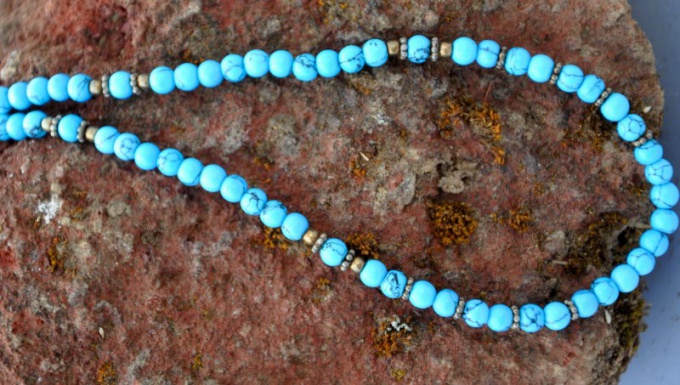You will need
- - watercolor;
- - a sponge;
- - gouache;
- - pastel;
- - a squirrel or kolinsky brush;
- - a few pieces of turquoise or images;
- - palette;
- - a sheet of paper;
- computer;
- program Adobe Photoshop.
Instruction
1
Consider a few pieces of turquoise. This can be done, for example, the exhibition of stones and stone products. You will see that the color of turquoise can be quite different. Some pebbles blue with a slight greenish tinge, others painted in an intense blue-green color. All intermediate colors can be attributed to turquoise. But in practice, so-called mainly shades of blue with a tinge of green.
2
Take a sheet of paper. Moisten it with water. Large surfaces are best wetted with a sponge. Will suit a wide soft brush. Let the water to dry up a little. Take the brush a small amount of blue paint, make the blot sheet, then evenly spread it across the surface. Make another blot, but the emerald green paint and smear it again. You have a color called turquoise.
3
This color can be obtained in another way. Cover the part of the paper with blue paint, the other was green. Spots must be contiguous. Watercolor will flow and you will get different shades of turquoise, bluish with a slight admixture of green to green with blue tint.
4
Gouache, unlike watercolors, do not mix directly on the sheet. To get a turquoise color, you will need a small Cup. Put a bit of blue paint, then the same green and mix thoroughly. If you need a lighter shade of turquoise blue, add white. Paints can be mixed in different proportions, depending on what exactly shade you need.
5
To get the turquoise color pastels, on velvet paper, swipe a few strokes of blue crayon. Grind them to get the spot. RUB a piece of paper or an eraser. Add a couple of green strokes and also mash. The resulting color corresponds to that which in life is called turquoise.
6
Find the turquoise color you can and in the palette offered in the program Adobe Photoshop. Its shades are in the part of the palette, where are the transitional colors from green to blue. To cover some part of the image of this paint, enough to take the dropper that is in the menu "Tools", you need a color to highlight part of the image that you are going to paint, and pour it with a watering can, you will also find in the menu "Tools" under the appropriate picture.
